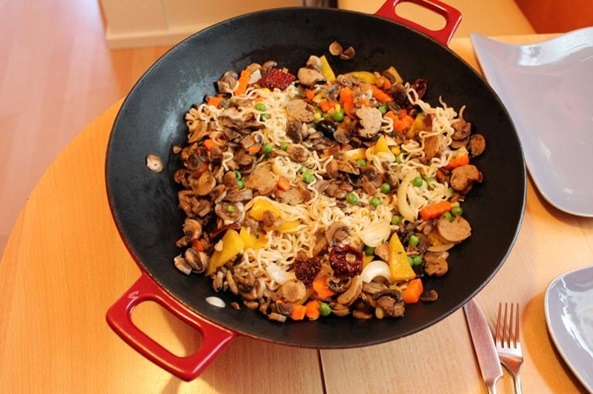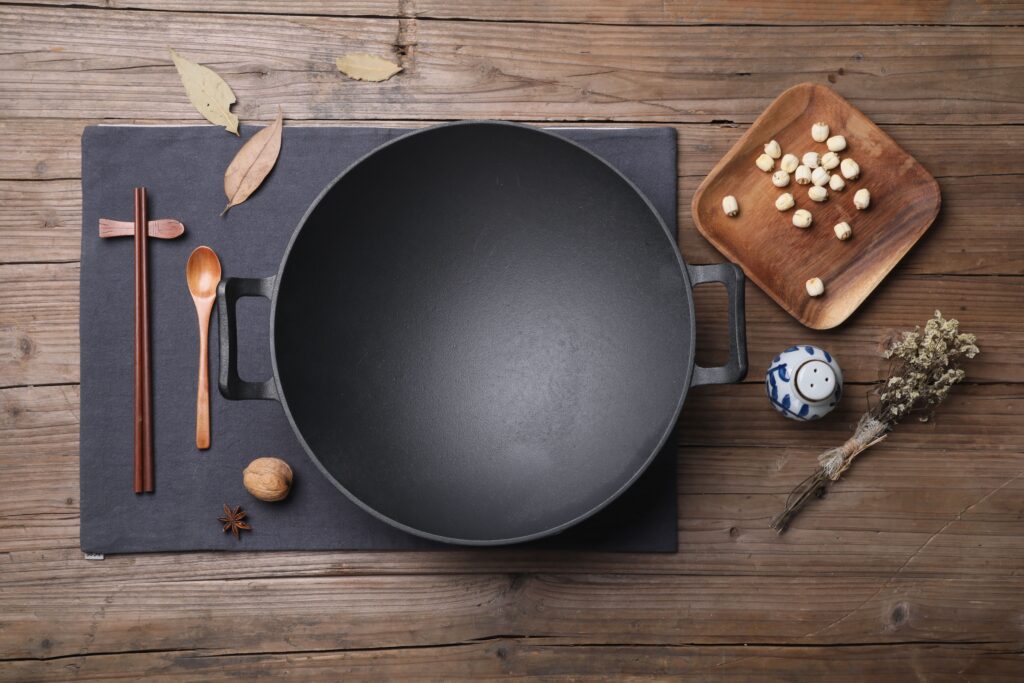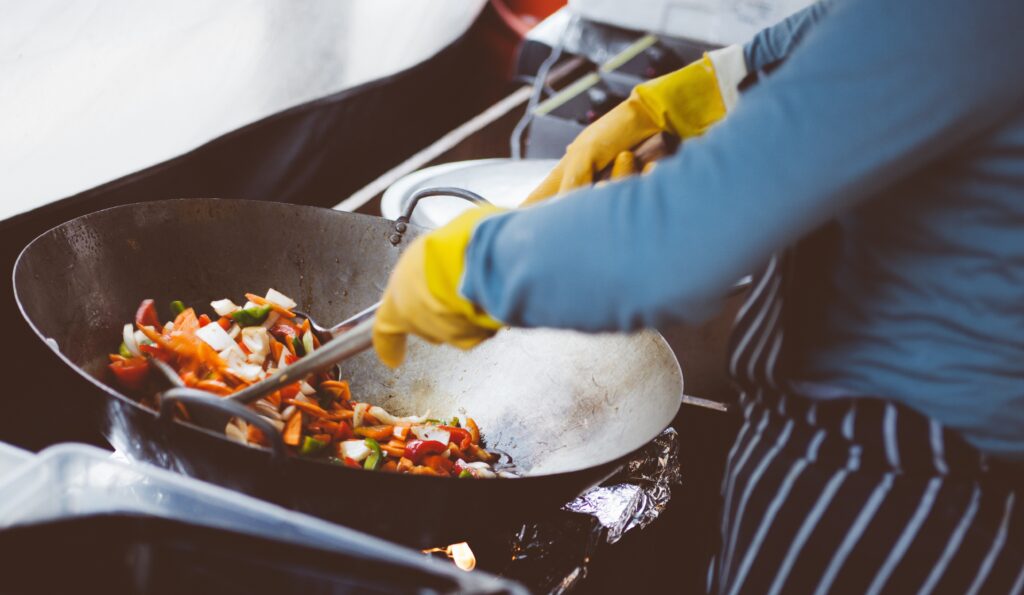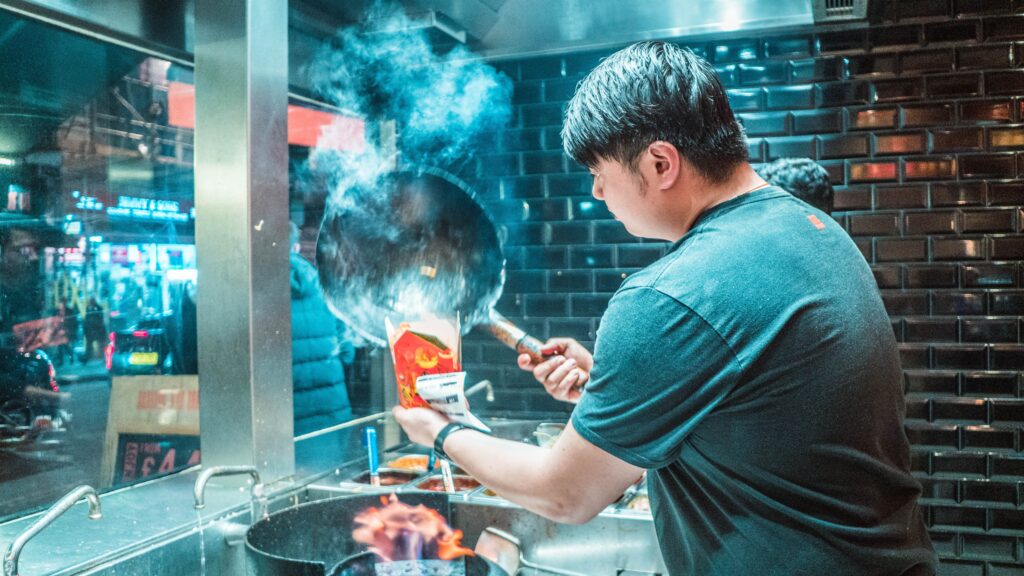Woks are among the most adaptable culinary instruments in existence. Woks are a straightforward design that originated in China and are now used all over the world. These round cooking pans come in a wide range of materials and designs, but their distinctive shape is as practical as it is recognizable. This article will guide you to choose a wok.
What is Wok?
A wok is a deep frying pan with sloping sides that evenly disperse heat. The wok is an ancient Chinese invention with deep Asian roots. It is typically a high-walled, round-bottomed pan, though flat-bottomed versions are becoming more common because they can be used on standard ranges. It frequently has either two side handles or a single long handle.
Why is a Wok Special?
Here are some of a wok’s essential features:
1. The Heat is Distributed Quickly
Woks made of carbon steel respond very quickly to heat. They experience rapid temperature changes. Because of this, it is possible to keep the tender quality of the meat while preserving the crispiness of the vegetables.
2. Has a Different Heat Zone
The bowl-like shape of the wok gives it the ability to create distinct heat zones. Therefore, when stir-frying, you can move ingredients that have been partially cooked to the side (lower heat), and then cook new ingredients in the center (higher heat), before combining them.
3. Ingredients Hold Up Well
The steep side of the wok makes it easy to toss the ingredients, which helps to ensure that everything cooks at the same rate. This helps to keep your cooking area neat by catching any splatters of oil, sauces, or other liquids that may occur.
4. Can Be Used in Various Ways
Many people think that the wok is only used for stir-frying, which is a method of cooking that is common in Chinese cuisine as well as many other Asian cuisines. However, this is only the beginning of what can be accomplished with a wok. It can also be used to braise, blanch, boil, fry, and even smoke food.
5. Easily Maintained
In contrast to contemporary non-stick cookware, a wok is highly resistant to scratches and can be easily reconditioned even if it has been neglected and rusted over time. The longer one uses a wok, the better a wok becomes.
How to Season a Wok?
What does seasoning a wok accomplish? First and foremost, it’s to stop it from rusting. The second goal is to create a naturally non-stick surface using a method known as fat polymerization. Simply put, it develops a patina of hardened oil that has a non-stick effect by burning oil on its surface at a high temperature.
Three easy steps are needed to season a new wok: Burn it twice more with a thin layer of oil after removing the protective coating and burning it once empty.
Before you start, ensure that:
- The ventilation in your kitchen is good. If the smoke from burning oil triggers your smoke alarm, turn on the exhaust hood or open the windows and doors.
- Use high-heating cooking oil, such as vegetable oil, canola oil, sunflower oil, rapeseed oil, corn oil, peanut oil, or sunflower oil. Sesame oil, olive oil, and other oils with low smoking points are inappropriate for this use.
Step 1: Take off the Protective Layer
The wok is always coated with an anti-corrosion protective coating in factories to keep it from rusting while it is being used in stores. Either an oil layer or a transparent lacquer layer may be present. You must completely remove it.
Wet a stainless steel scrubber with warm, detergent-free water. The wok’s surface should then be scrubbed firmly both inside and out. Make certain you don’t overlook any areas. Completely rinse, then pat dry with a kitchen towel.
Step 2: Burn the Wok Empty
Put the heat on high in your cooker. Set the wok atop. Burn it completely. Throughout this process, the color will change from silver-grey to golden brown to a metallic rainbow shine before finally settling to a blue-grey shade.
Holding the handle, and moving it in various directions so that every part has a chance to come into contact with the heat will ensure that the wok is completely burned. Once everything is finished, allow it to sit for about 5 minutes until it is cool enough to handle.
Step 3: Burn With a Little Oil
Some oil should be added to the wok. Rub the oil around the inner surface with a piece of kitchen paper, leaving only a very thin layer behind.
Re-burn it at a high temperature. Pay attention to one thing at a time. The color will darken and smoke will start to rise from the heated area. Continue to another area once no more smoke is visible there.
Repeat the process until all of the oil coatings have been burned off and there is no longer any smoke. The wok ought to now have a grayish-black exterior.
After letting it cool, apply another layer of oil and repeat the process. Your wok is then properly seasoned and prepared for use!
How to Choose a Wok?
The classic wok pan is a thin-walled metal cauldron with a conical shape and a convex bottom. The thin walls and rounded bottom of this cookware allow you to cook food quickly over high heat. When choosing a suitable wok, you should evaluate the main parameters that affect the functionality and comfort of using it in the kitchen.
Bottom
In the standard wok, the bottom is convex. It was originally conceived because this cookware was created for cooking on an open fire. Manufacturers offer woks with both convex and flat bottoms. For example, Yosukata professional wok which can be found at https://yosukata.com/ has both options. Modern models usually have a flat bottom and are adapted for use on gas, electric, glass-ceramic, and induction hobs. For gas units, you can use either option.
Material
Not all materials can interact with induction or glass-ceramic hob, so when purchasing a wok, it is necessary to study the information for which hobs a particular pan is intended.
- Aluminum frying pans instantly heat up, have a minimum weight, but the dish burns quickly without constant stirring. You can use such utensils on gas and electric stoves.
- Steel woks are the most popular. But keep in mind that steel can also be different. Manufacturers offer pans made of carbon or stainless steel and in combination with other metals (aluminum, copper, nickel, chromium).
- A cast-iron pan, on the one hand, has excellent non-stick properties. And on the other — heaviness and fragility. A wok with a wall thickness of 3 mm will heat up faster, but it can crack at any time. The thick-walled 9 mm wok is much heavier but more durable. It will slowly heat up but retain heat longer due to smooth cooling. In a thin-walled skillet, it is easier to prepare traditional Asian food by shaking. It is inconvenient to do this in heavy cast-iron dishes.
Diameter
The typical diameter of woks in the East is 36 cm, but there are options from 20 cm to 2 m. Small pans are used for preparing a quick snack, and large ones are intended for public kitchens. A frying pan with a diameter of more than 30 cm is heavy and inconvenient: it will take up a lot of space in a regular kitchen. The optimal size for home use is 28 cm.
Pick a Wok With a Lid
Why go with a wok that has a lid? Because a wok with a lid will greatly simplify your life, especially when cooking. The ingredients frequently need to simmer while being covered while cooking. Consequently, choosing a wok with a lid will make cooking with a wok much simpler.
Thus, buying a wok is not an easy task. Cast iron and aluminum pans are the most popular. The advantages of the first are obvious: reliability and durability, it is not afraid of either high temperature or scratches. However, everyone knows that cast-iron pans are heavy, and you are unlikely to be able to operate such dishes with one hand. That is why you can look at lighter aluminum or steel options.





